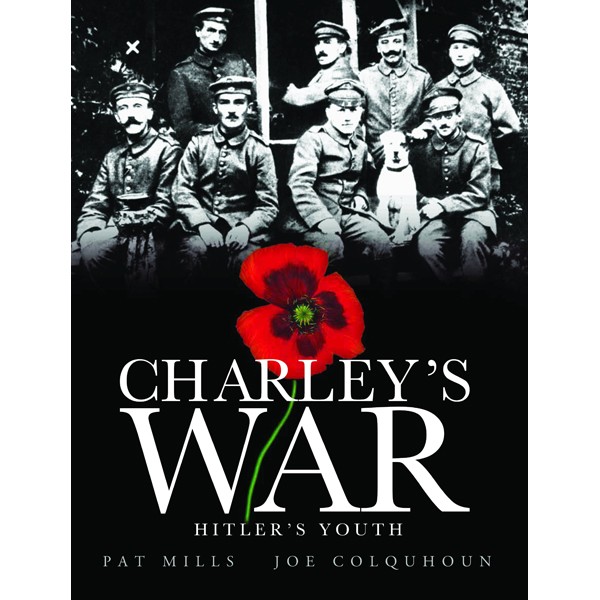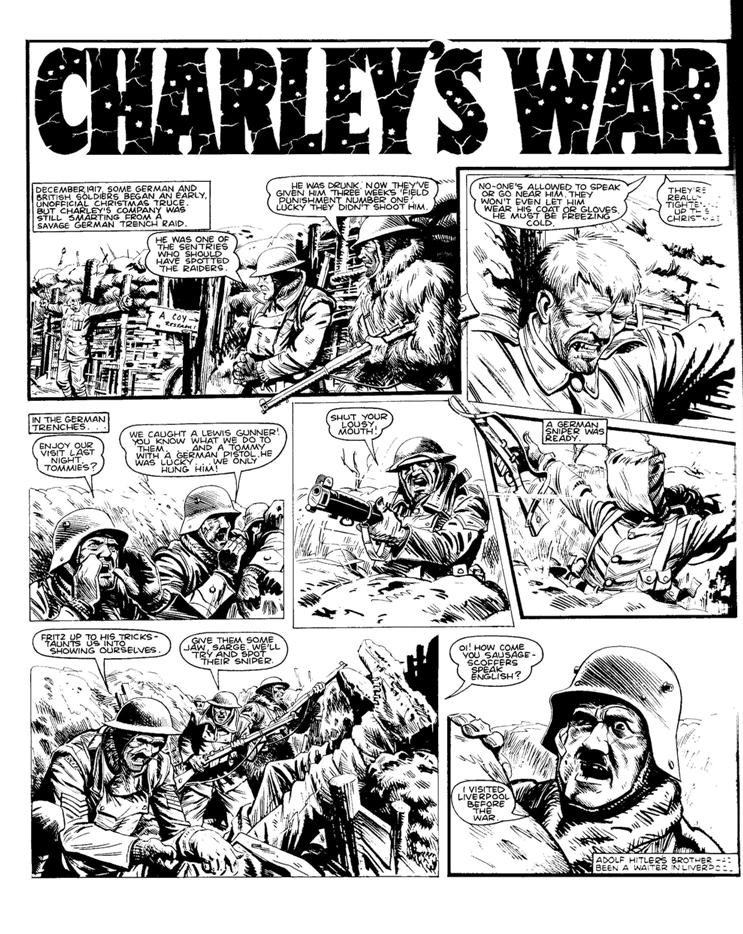Charley’s War – Hitler’s Youth: A Review
History became a great interest of mine when I started to see it not as dates and classroom lecturing, but as a story. The history of the world is a fascinating tale, because one of the things that make a great story are the characters that fill it. One of the most interesting and devastating of these characters to exist in the timeline of the world is that of Adolf Hitler.
I was excited to read Charley’s War: Hitler’s Youth, not for the practical reason of my interest to most graphic novels but in particular to the fact this was about the First World War. I’m a bit of a history geek on the side, and when it comes to the First World War I find it is often unmentioned in favor of the Second World War for the setting of a narrative. WWI had this sense of shock factor to all of Europe. It was the first war that involved civilian casualties on a massive scale. The first to use shells, trenches, barbwire, gas, tanks, machine guns, and other technologies that became mechanized nightmares.
Writer Pat Mills and artist Joe Colquhoun capture the ugliness of this First World War and the nightmare it was to so many. The eighth volume of Charley’s War takes place on the Western Front of France in 1917 where the main character Charley Bourne is stationed with his British regiment. No character is drawn as a cleaned up hero with white cowboy hat and shiny armor. Dark values of bold ink fill every page to describe both British and German sides of the trenches only a few yards apart. Though the dialogue and story of the Germans and British tries to be equally gray, Mills does seem to paint one side’s characters darker than the other. I felt there was bit of forced villainy on the part of Adolf Hitler. The times of the original publication show through when the reactions of the Germans at times resembles an 80’s cartoon; “we’ll get you next time!!” as they shake their fists. The history snob comes out if you are one at times, but Charley’s War taught me more things I never knew than I did know. The grim tactics of war are brought out in the trench standoff such as snipers using horse corpses to hide in. You feel a sense of sympathy and horror for both the Germans and British, as they each were ordinary men serving the orders of crazed leaders of their times.
I must admit the second half of the volume did not continue my interests as much as the first half did. This goes back to how Adolf Hitler can be the most fascinating of non-fictional characters; the second half did not include him. Instead, it continues with Charley’s brother Wilf trying to earn his way up as a gunner-observer to the airplane pilots. It didn’t capture my attention as much, as I don’t know if this had to do with no Hitler in it or that it reminded me of the typical fighter pilot/starfighter Luke Skywalker storyline. I wanted Adolf to come back into the story after each page. I guess great villains make great stories, especially when the stories are true.





